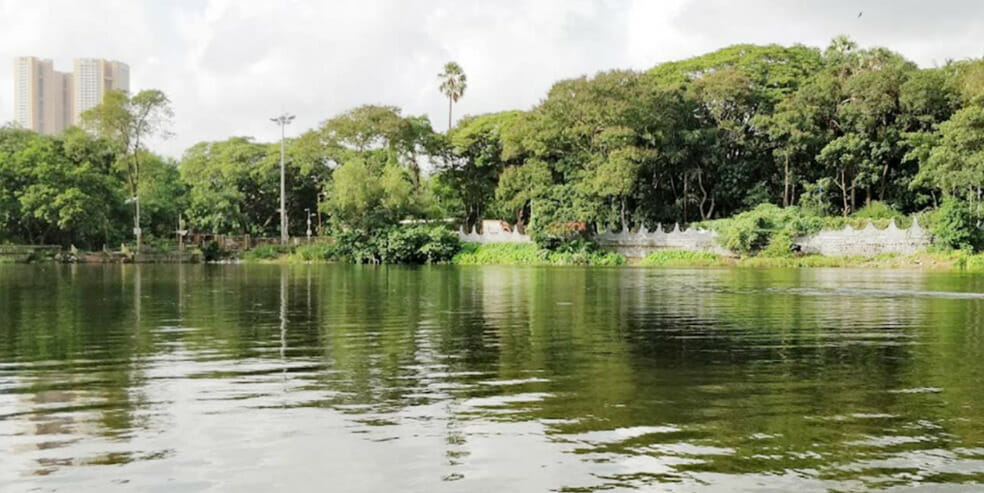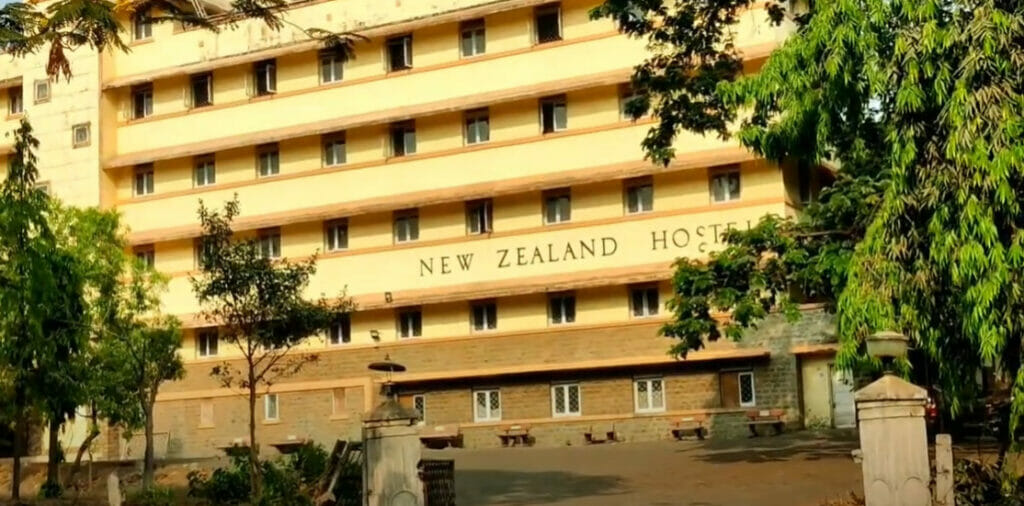In the past few years, the proposed Metro-3 car shed and subsequent tree felling in the Aarey forest has made headlines and people’s fight to save the remaining trees continues even now.
Historically, as Mumbai’s concrete jungle around the forested area exploded along with rising pollution levels, Aarey emerged as the city’s oasis for biodiversity and its ‘last green lungs’. It is a popular destination for cyclists, joggers, bird watchers, nature enthusiasts, and picnickers looking for a few hours of nature’s company.
According to environmentalist Stalin D, in the earlier days, the concept of institutions was not a concrete jungle. It was a building surrounded by nature like trees and gardens. Plots of land were allotted for the institutions and there was hardly any scope for destruction.
All the institutions which exist in Aarey were mostly built in the 1950s and have not caused any harm to the rest of the environment, says Stalin. “But nowadays Aarey is being seen as a gold mine which has been pushed for exploitation.”
History of the Aarey land
In the year 1949, a total land area of 3162.32 acres was acquired from 10 villages at Goregaon (East). The villages included Sai, Gudgaon, Dindoshi, Aarey, Pahadi Goregaon, Vairawal, Kondivita, Maaroshi, Parjapur and Paspoli.
Out of the total acquired land of 3162.32 acres, around 85.70 acres of the land was transferred to the central government, while 1742.54 acres was given to the state government. Other sections of the land including 168.16 acres was given to other institutions, while 1165.92 acres is possessed by the Aarey Colony.
In 2020, around 812 acres of land in the Aarey Colony was declared as a reserve forest by the MVA government.
Aarey Colony – The tribals
A population of almost 10,000 settlers lives in the area of Aarey forest with 27 padas or tribal settlements. Each pada has around 80 to150 families. Most of them existed before Aarey Milk Colony was created and have lived in harmony with their surrounding nature.
While the Warlis of Ketlipada have been fighting for years to ensure that they aren’t relocated to make way for the Force One (an anti-terrorism squad) training camp project, the Kokana tribe from Prajapur pada have been battling against the Metro car shed.
Aarey Milk Colony
In 1949, around 1,300 acres were allotted to the State Department of Dairy Development. The vision was to develop a separate area to streamline Mumbai’s unhygienic and unorganised cattle sheds and give a push to the production and supply of dairy products. The man behind this idea was the then Bombay milk commissioner Dara N Khurody. In 1951, Prime Minister Jawaharlal Nehru formally inaugurated the milk colony by planting a sapling.

Chhota Kashmir
Besides the popular tourist attractions of Mumbai such as the Gateway of India, Chowpatty food stalls, the various beaches, there is another place, away from the bustling city, called Chhota Kashmir – a serene garden with a lake – in Aarey. This garden has an old connection with Bollywood as numerous films have been shot there. It gives a resemblance of Kashmir, and in the earlier days when it was expensive to travel all the way to Kashmir or Shimla for a shoot – it was done here. This is the place where the Late actor Rajesh Khanna shot one of the famous Bollywood songs with Sharmila Tagore for the movie Aradhana. Today, many tourists and locals can be seen visiting the garden on vacations. In addition, the chirping of birds, the fresh air, and a calm environment can be experienced during a boat ride at the lake spread over 4 acres of land opposite Chhota Kashmir.
Central Poultry Development Organisation (Western Region)
This central government organisation was formed at Aarey Milk Colony, Mumbai in June 2003 after merging three Units of the organisation including the Central Poultry Breeding Farm, Random Sample Poultry Performance Testing Centre and Regional Feed Analytical Laboratory, Mumbai.
Aarey Dairy Butterfly Garden
In 2016, a family of five from Goregaon (East), started a butterfly garden near Aarey Dairy, which is buzzing with more than 20 species of butterflies. There are 86 species in Aarey, according to researchers.
Sandeep Athalye, 37, his wife Vardayeeni, their son Malhar and mother Aarti have been carrying the baton passed onto them by his father Vinay, who passed away in 2015. “It all started with my father in 2000. My father would tell me that nature has its startling beauty and presents us with many gifts. It is our duty to return the favour,” Sandeep said in a report published in 2017. The senior Athalye first planted 100 saplings at unit 16 in Aarey and over the next 15 years, he planted more than 3,500 saplings in Aarey.
Read more : Aarey tree felling: A reluctant green signal allows MMRCL to axe more trees
Dadasaheb Phalke Chitranagari
Conceptualised in 1977, the film city, or the Dadasaheb Phalke Chitranagari, situated at the periphery of Aarey is one of India’s largest film studio complexes spanning over 520 acres of scenic delight.
Numerous films including small-scale production activities, big-budget movies, reality shows, hosting of award ceremonies, and more take place in this lush-green spot in the city. Major sets of shows like Big Boss, KBC (Kaun Banega Crorepati) Studio, etc are also part of the film city.
New Zealand hostel
Inaugurated in April 1959 by the then Agriculture minister Dr. Panjabrao Deshmukh, this educational institute was built by the donation of the Government of New Zealand. This Institute is used for training and camping due to the ground and greenery around. During the COVID-19 pandemic, this institute was also used as a quarantine center for the people infected in the Aarey region.

Aarey civic hospital
The 51-year-old Aarey hospital has around 25 beds, but the local residents have been struggling for basic medical facilities. Around 40,000 people reside in Aarey but they travel to Jogeshwari, Goregaon, and Andheri for basic health services. Mid-day had reported in October 2022 that the hospital was in a dilapidated condition and had become a dispensary. There is an OPD which runs from 8 am to 2 pm with only one doctor and one nurse. According to the staff, no patient has been admitted to the hospital, which opened in 1971, for the past eight to 10 years.
Royal Palms Estate
Royal Palms Estate which – according to Aarey’s map – falls within its boundaries. However, in reality, it is a privately owned area in Goregaon East. The company has 240 acres of land and shares a mountain with the Aarey forest. It is surrounded by the forest, the Aarey Milk Colony and the Film City. The estate gets a pollution-free atmosphere and fresh air most of the time due to the forest, but the recent BMC construction of the main road in Aarey has left the roads adjacent to the estate in a dusty and pothole-ridden condition. Several residents have complained about rising air pollution and health risks.
Conservation and construction
Besides the metro construction, currently, there are no other imminent threats to the biodiversity of Aarey due to the Forest Conservation Act. Stalin says, “However, there is an RTO testing center and more Slum Rehabilitation Authority (SRA) buildings, which are part of future plans in Aarey. The government was also proposing plans of moving all the tribals into a giant village with some amenities, but all of this is just absurdity, nobody has asked for it.”
“The land should remain the way it is – The last surviving green lungs of Mumbai.”